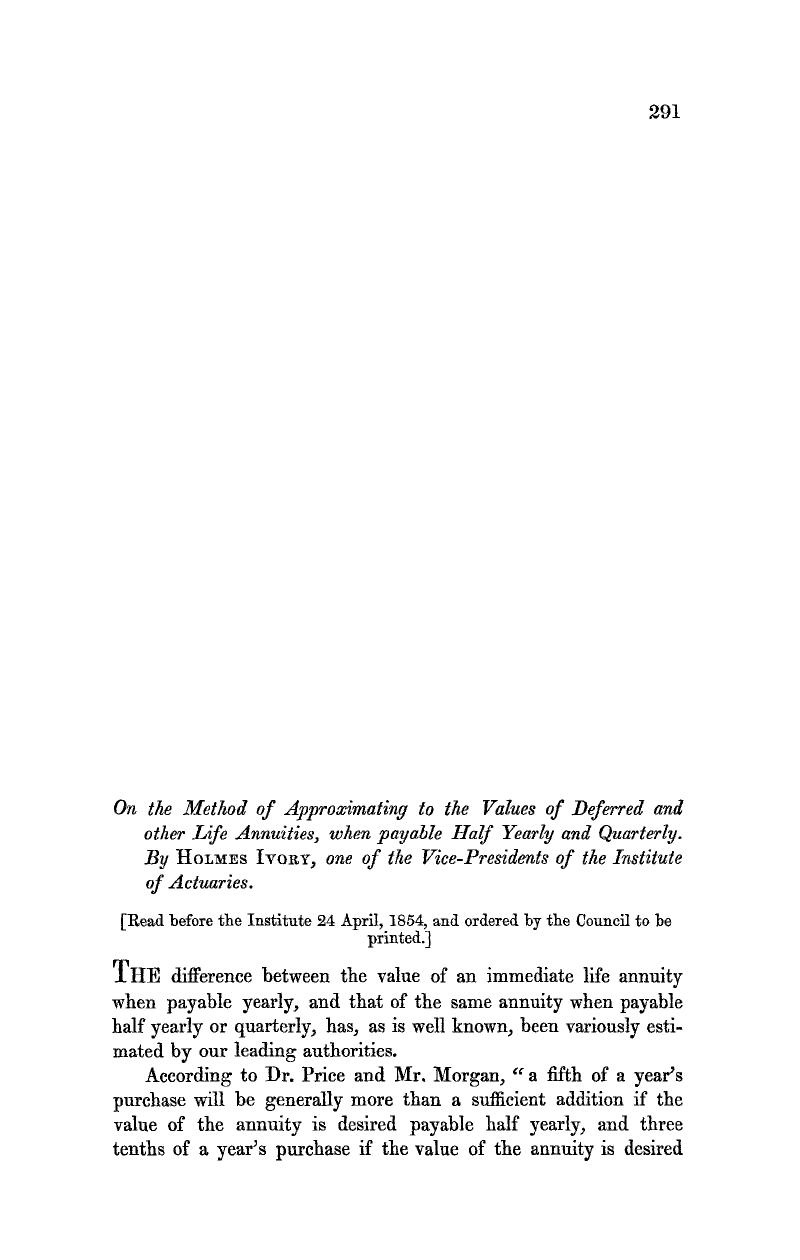No CrossRef data available.
Article contents
On the Method of Approximating to the Values of Deferred and other Life Annuities, when payable Half-Yearly or Quarterly
Published online by Cambridge University Press: 18 August 2016
Abstract

- Type
- Research Article
- Information
- Copyright
- Copyright © Institute and Faculty of Actuaries 1854
References
page 292 note * Price, vol. i. p. 246, 6th and 7th Editions.
page 292 note † Baily, ch. x. § 355. Milne, ch. viii. § 485.
page 293 note † Mr. Sang has framed his Tables on the assumption of the annuity being payable in advance or at the beginning of the year. The tables usually made use of, however, assume that the annuity is payable at the end of the year. Hence the value of an immediate annuity, as given by Mr. Sang, is always greater by 1 than that given in the ordinary tables.
page 294 note * In conformity with general practice, an annuity deferred n years is here held to mean an annuity to be entered on at the end of n years, and of which the first payment is to be made at the age m + n + 1. This mode of distinguishing the period of entering on an annuity from that on which the payment is to commence is apt to lead to mistakes; and it might be well, therefore, were the suggestion made by Mr. Farr in his Treatise on the Finance of Life Assurance (p. 30), appended to the octavo edition of the Twelfth Annual Report of the Registrar General, to be generally adopted, and an annuity deferred n years held to be one of which the first payment is to be made at the age m + n.
page 299 note * The rationale of the operation will perhaps be better exhibited in the following form:—
The present value of a reversionary annuity on a life 34 after one of 45 being £5·266, is equivalent to a sum payable at the end of the year in which 45 dies (leaving 34 alive) of £14·310, which represents the value as at that date of an annuity of £ 1 payable annually during the remainder of the life of a person now aged 34, after the death of another aged 45, and of which the first payment has to be made in advance or at the end of the year in which 45 dies. But as the annuity is to be paid by half yearly instalments, the first payment will only be £·5 in place of £1, and we must therefore deduct £·500; on the other hand, there has to be added in respect of the half yearly payment £·250, leaving to be deducted £·250; and the value of an annuity of £1 payable half yearly to a life now aged 34, ascertained as at the end of the year in which 45 dies, is £14·060, the present value of which at age 34 is £5·174, agreeing with the result in the text.




